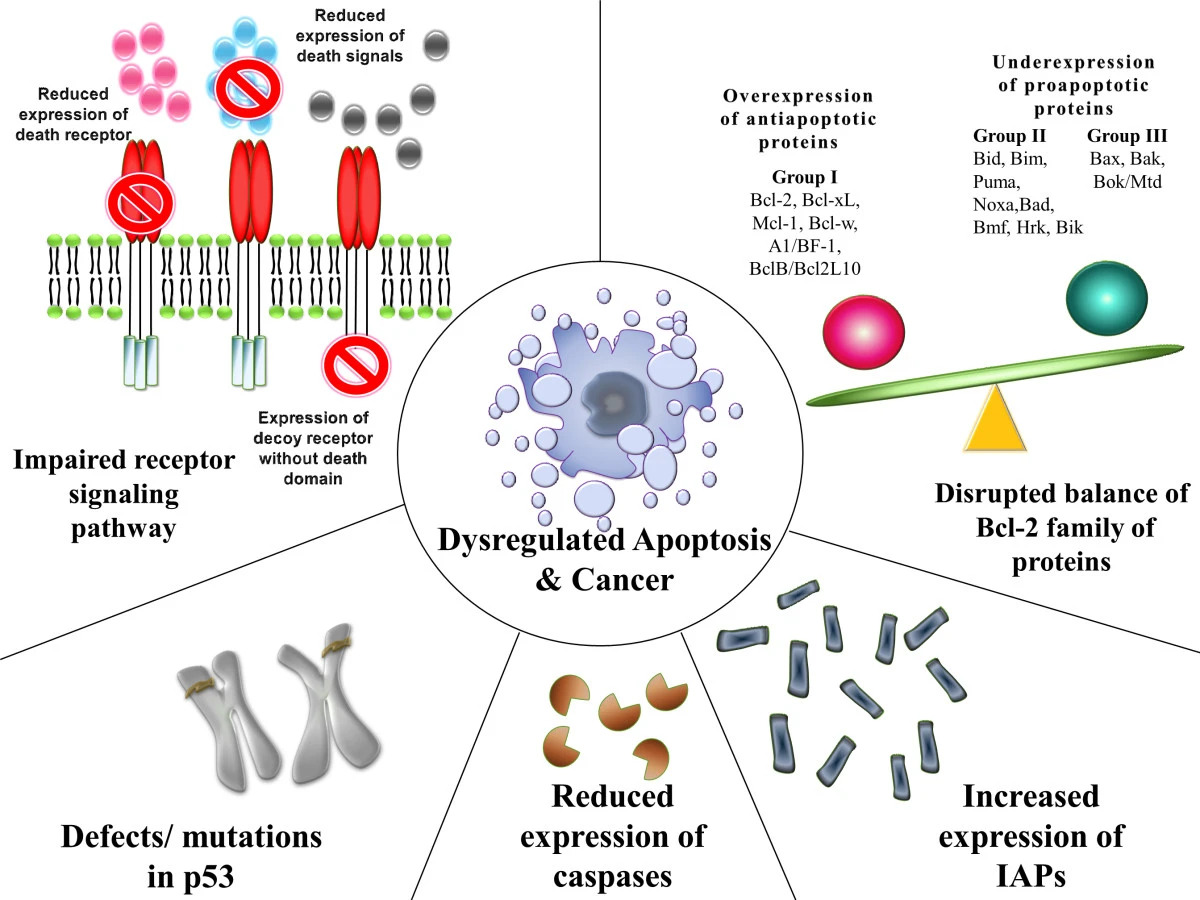Playlist
Show Playlist
Hide Playlist
Cell Cycle Regulation
-
Slides CP Neoplasia Cell Cycle.pdf
-
Reference List Pathology.pdf
-
Download Lecture Overview
00:00 Okay, there can be a lot of words, we're going to start at the top and work our way through, hang in there. So, cell cycle regulation has got a number of players. So, initially there is some sort of growth factor stimulus and it can also be interactions with the extracellular matrix through integrins, but there is a growth signal. That's going to start the cell through the G1 phase. It's going to start making more proteins. It's going to be phosphorylating proteins getting close to that G1S checkpoint. Okay, some of the genes that get activated from the growth factors or from integrin interactions are going to be MYC and RAS and a whole bunch of other genes and if you haven't already heard about MYC and RAS and all the other genes, you will. They are potential targets for chemotherapies in malignancy because they control cell cycle. The phosphorylation of MYC and RAS and other proteins will lead to the expression, ultimately the transcription of new message for cyclin D. Okay, so cyclin D will now be increased in amount within the tissue. 01:13 That allows it to interact with its CDK, it's cyclin-dependent kinase 4. We make a cell cycle complex that will allow us to do the next step. We'll get us through the G1S transition. 01:27 Well, how does it do that? Well, that cyclin CDK 4 complex will now act on the retinoblastoma protein, RB, and will hyperphosphorylate it. Don't worry, we'll come back to this and walk you through those steps because it becomes interesting and important. 01:45 That RB phosphorylation, that's going to be a major way that we're going to regulate the next step. We release from RB a protein called elongation factor 2 or E2F. That E2F, just like it says, will allow us now to elongate the transcription or translation of the DNA so we can now replicate it in the S phase. Okay? We have then also, during this period of time where E2F is inducing the transcription of other proteins, cyclin E in particular, gets made. And we're also going to transcribe and translate a variety of DNA polymerases and other genes because of the effect of E2F. That cyclin E is now going to interact with its CDK, CDK2 to make an active complex that will allow us to go finally from G1 into the S phase. So last steps in here. Okay, that is at that particular point on our cell cycle. So, we've gone from some sort of external stimulus, getting upregulation of cyclin D. It interacts with CDK4 to cause ultimately the hyperphosphorylation, a lot of phosphate groups and retinoblastoma, RB. That will release the elongation factor 2 which will allow finally the transcription translation of cyclin E so that we can make the cyclin E CDK2 complex to drive cell cycle progression from the G1 to S checkpoint. Okay, good. There is more regulation. Okay, so hang in there. So, there are many, many, many checks and balances on this process. I'm only going to highlight some of them. It can become dual ring, remember that original slide with all the ovoids on it with red and blue. Yeah, well. 03:48 Okay. So there are a number of checkpoint regulations. One of these that gets generated during the cell cycle progression is p16INK4 that will turn off the cyclin D CDK4 complex. 04:09 Another checkpoint that can occur is the upregulation of molecule called p27. It's a phosphorylated molecule 27 kilodaltons and it will inhibit the cyclin E CDK complex. So we have many different ways that we can inhibit the pathways that will take us through cell cycle. Even if everything elses go, we have ways to say "Nope, we're not going."
About the Lecture
The lecture Cell Cycle Regulation by Richard Mitchell, MD, PhD is from the course Neoplasia.
Included Quiz Questions
Which protein inhibits the cyclin D/CDK4 complex?
- p16INK4
- p27
- Rb
- Cyclin E
- MYC
Which protein forms an active complex with cyclin E?
- CDK2
- CDK4
- CDK3
- RAS
- MYC
Customer reviews
5,0 of 5 stars
| 5 Stars |
|
5 |
| 4 Stars |
|
0 |
| 3 Stars |
|
0 |
| 2 Stars |
|
0 |
| 1 Star |
|
0 |




